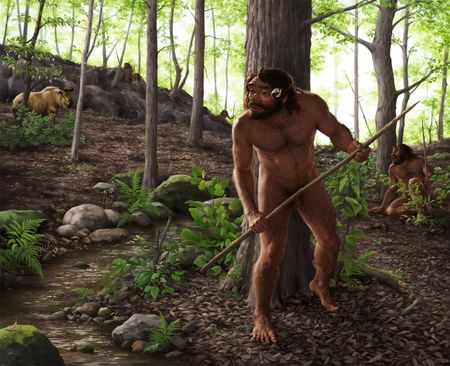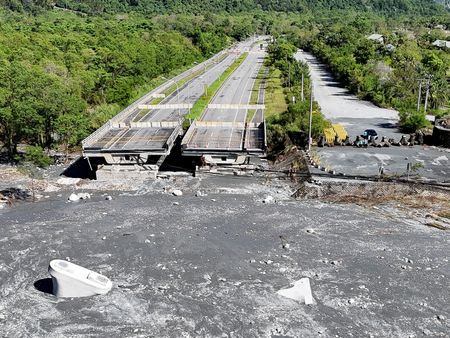By Will Dunham
(Reuters) -In 1990, an ancient human skull was unearthed in China’s Hubei Province that was so badly deformed during fossilization that it was hard to gauge its significance. A new analysis now indicates that the skull belongs to an early branch of a sister lineage to our species in a finding that may shake up the understanding of how human evolution unfolded over the past million years or so.
Researchers used sophisticated scanning and digital reconstruction techniques to determine the original shape of the skull, which is between 940,000 and 1.1 million years old, and compared it to more than 100 other human fossils. They said it appears to be the oldest-known member of an evolutionary lineage that included the enigmatic Denisovans who later roamed a wide swathe of Asia and interbred with our species Homo sapiens.
The skull, called Yunxian 2, appears to be that of a man possibly 30 to 40 years old, according to paleoanthropologist Xijun Ni of Fudan University and the Institute of Vertebrate Paleontology and Paleoanthropology, Chinese Academy of Sciences, who led the study published on Thursday in the journal Science.
Species in the human evolutionary line are called hominins. The skull previously was tentatively classified as belonging to the hominin species Homo erectus, which had body proportions resembling our own but a smaller brain size and different facial features. The researchers said the new analysis showed that the skull exhibited features that indicate it was not Homo erectus.
“It has a long, low skull and receding forehead behind a strong browridge, but the estimated brain size is the largest so far for any hominin of that age. The face is big but with flat and forward-facing cheekbones, and a large nose with a projecting nasal bridge, but without the midfacial prominence we find in Neanderthals,” anthropologist and study co-author Chris Stringer of the Natural History Museum in London said.
The skull had been partially crushed and its shape distorted from pressure and movement in the ground over many years during and after the fossilization process.
The researchers placed the skull in an Asia-centered hominin lineage that includes the species Homo longi, known from fossils including a skull discovered near the Chinese city of Harbin, as well as the Denisovans.
The skull, Ni said, shares features with the other members of this lineage such as a broad and massive roof of the mouth, flat and low cheekbones, an expanded region at the back of the head and some features of the ear region.
The existence of Denisovans was unknown until researchers in 2010 announced the discovery of their remains in Denisova Cave in Siberia, with fossils later unearthed elsewhere in Asia. Both Denisovans and Neanderthals experienced significant interactions with Homo sapiens, including interbreeding, before vanishing soon after for reasons not fully understood. Because of the ancient interbreeding, many people today from Asia and some other places carry DNA from Denisovans.
The findings may change the understanding of the path taken by human evolution in the past million years or so involving members of the genus – a group of closely related species – called Homo.
The researchers proposed that five major branches, or clades, of large-brained humans in Africa, Europe and Asia began diverging from each other more than a million years ago. These branches led to Homo sapiens; Homo longi and the Denisovans; the Neanderthals (Homo neanderthalensis); Homo heidelbergensis, first known from a jawbone found in Germany; and Homo erectus.
“The Homo longi clade was quite successful in Asia, occupying a very large area with diverse environments for more than one million years. They probably lived in small, isolated groups and had little interaction with other groups. Consequently, they exhibit considerable morphological diversity,” Ni said.
The researchers said the Yunxian 2 skull provides evidence that the process of divergence among the human lineages occurred earlier than previously suggested.
“Based on our new discovery, we challenged the old timelines of human evolution,” Ni said.
The oldest-known Homo sapiens fossils date to roughly 300,000 years ago in Africa. But the researchers proposed that the lineage that led to our species peeled off from the other hominin lineages hundreds of thousands of years earlier – possibly more than a million years ago.
Stringer said the skull may help resolve a dilemma called the “Muddle in the Middle,” the perplexing array of human fossils between 300,000 and one million years old.
If the Yunxian 2 skull sits close to the origins of both the Homo longi/Denisovan and Homo sapiens lineages, Stringer added, “it may represent one of the most important windows yet into the evolutionary processes that shaped our genus around one million years ago.”
(Reporting by Will Dunham in Washington, Editing by Rosalba O’Brien)










